A dozen years ago, fixed wing pilots thought very little about “gyrocopters” — as some people called them. Actually that word is a model name established by Igor Bensen, widely thought of as the father of this activity along with Juan de la Cierva of Spain, known for his pioneering autogyro work.

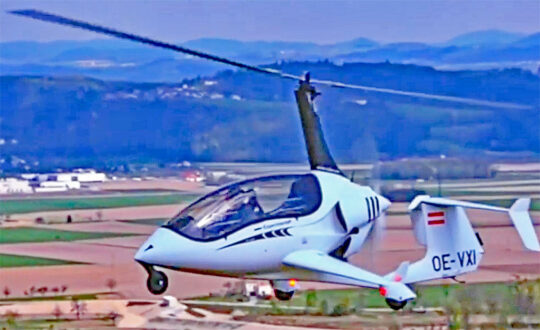
Gyroplane interest grew quickly after European designers took the lead from American manufacturers. Think back to the days of Ken Brock’s gyro or the former Air Command (now under new management). Those machines were simpler. Euro designs went much further and kept on going. ArrowCopter was one of the early leads in this fascinating development.
Fly Like An Arrow
Getting right to the point, although this rakish design attracted a large video audience over the years, ArrowCopter failed in the marketplace. The company is no more. Why the product failed could hinge on any number of reasons but at least one early video review of ArrowCopter was not very complimentary, faulting both the company organization and its flight qualities. The reviewer liked ArrowCopter’s speed, but he did not like the way it behaved at those speeds. Reviews like that can kill a fledgling design.
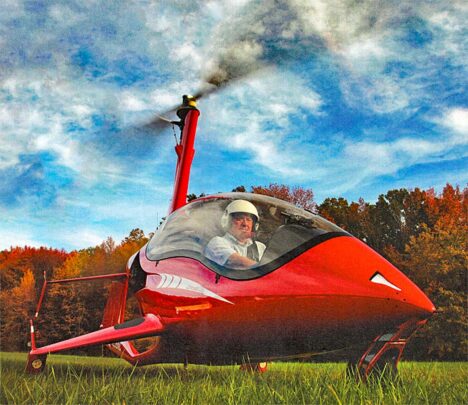
American gyroplane enthusiasts first saw ArrowCopter back in 2014, only three years after its maiden flight. If you were at Bensen Days that year and admired ArrowCopter, you may be aware you’ve seen nothing since.
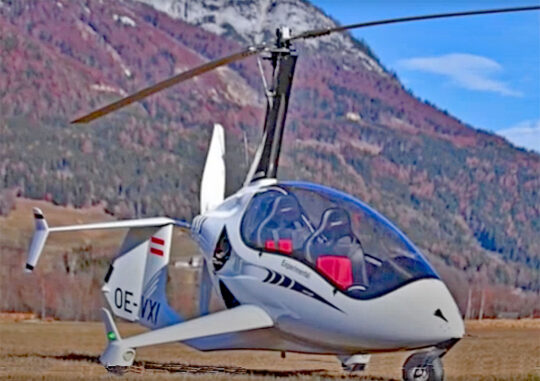
As ArrowCopter accelerated down the runway, pilots looked for 60 mph (52 knots) and 340 rotor rpm. At that point ArrowCopter is ready to launch. Climb out occurs at 60 mph while cruise speed is 99 mph (86 knots). ArrowCopter’s never-exceed speed was 120 mph (104 knots).
Non-gyroplane pilots may not find that particularly fast. Certainly, it is not compared to a fixed-wing, high-powered mLSA aircraft. As gyros go, though, that’s fairly quick. It’s smooth lines explain much.
What you should know is that gyroplanes are some of the best aircraft in recreational aviation at performing well in stronger winds. This is true of all gyroplanes, not only ArrowCopter.
Market Changes
Today, ArrowCopter is gone but others have risen to carry on with striking designs and innovative ideas. Along the way, Rotax has continually raised the power output of its 9-series engines. The Austrian engine giant acknowledged that for several years in the mid- to late-2010s, gyroplane manufacturers were the single biggest segment buyers of 9-series engines. Gyroplanes were hot, hot, hot. Sadly, ArrowCopter missed the chance to grab many sales.
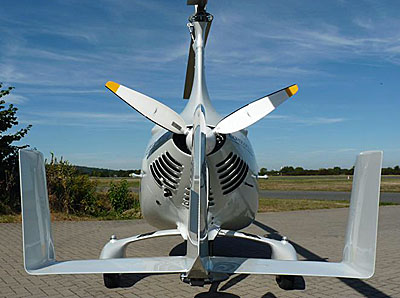
Autogyro’s side-by-side Cavalon view from aft.
Brands like Germany’s AutoGyro rose quickly and sold large numbers of aircraft. They steadily refined these and produced several models that remain among the most popular designs on the market.
Others like Magnigyro from Italy also flourished and also offered increasingly advanced models. More recently, side-by-side seating has made inroads into what had been exclusively tandem-seating aircraft. It’s worth noting here that most of the earlier American gyro models were single place but it was a much earlier time.
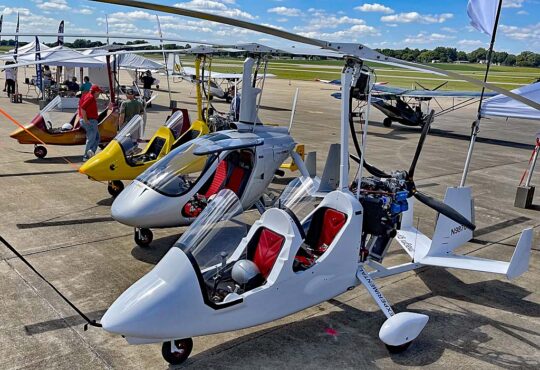
Magni’s gyro line up.
As the Europeans began selling faster, American producers like SilverLight reintroduced gyroplanes as a Made-in-American product. The Zephyr Hills, Florida manufacturer enjoyed a good early run as its Ranger arrived on the market. SilverLight later added a full enclosure for their model but it remains tandem seating.
Side-by-side interactions included the Rotorvox also from Germany. This product somewhat emulated ArrowCopter by being spacious inside. Rotorvox has not made a big impact in the market but it was rather late to the party. As gyroplane sales cooled somewhat weaker producers lost out to the majors.
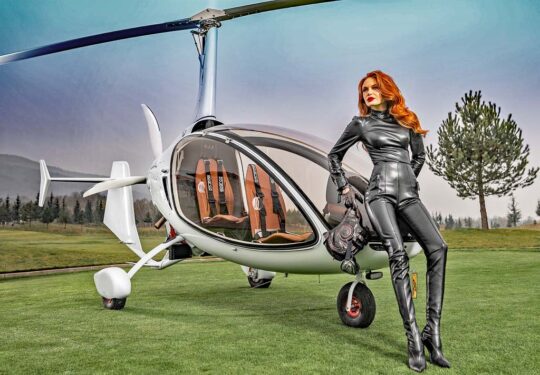
Niki’s stylish gyroplane and, we presume, its pilot.
A newer entry but one also full of innovations is the Niki I wrote about recently (link below).
So, while our #3 aircraft subject has disappeared from the recreational aircraft scene, the market remains rich with gyroplanes, most of them quite handsome and clever. Now, with Mosaic proposing to finally allow factory-built gyroplanes, we may see a new renaissance in gyroplane adoption.
Stay tuned as I work my way through the Top 50 aviation videos of the last decade. Can you guess what’s next?
ARTICLE LINKS:
With ArrowCopter gone, here are gyroplane producers in business today; list does not include all manufacturers with regrets to any missed products:
- Gyro Technic (single seat), all content on this website
- AutoGyro, Video Pilot Report
- Magnigyro, article on this website
- SilverLight, article on this website
- Rotorvox, article on this website
- Niki, or Niki Gyro, 2 articles on this website
- Hummingbird, article on this website
- Air Command (renewed product), article on this website
- Skyblazer, mention in this article
- Fusioncopter Nano, a Part 103 gyroplane covered in this article
- ELA Eclipse, contact information, plus video
MORE GYRO INFO:
- Gyroplanes or Autogyros, article on this website comparing the two types
- Market Share Report on gyroplanes in America
- Bulldog Autogyro, video on this website (beautiful production no longer offered)
Here is the video that ranked so high with YouTube enthusiasts:



Waiting for FAA sign off for MOSAIC is a fool’s errand. They threw a cold bucket of water on MOSAIC at EAA AIRVENTURE 2022. They have been butt-hurt over 737-MAX and have been having a hissy-fit ever since. They are waving their big FAA stick , Trevor Jacobs, Trent Palmer, MOSAIC, GAMI FUEL, Until there is a non DEI FAA administrator from the aviation world they will continue their temper tantrum. They will ignore GA saying they are too busy with traffic control shortages and modernization, screw the little guys and piss-ant GA manufacturers.
For utility, nothing yet is better than the Opener Blackfly; 2nd generation version with 12 kWh batteries and 50 minute endurance. Street Legal, capable of landing on any street, roadway or driveway clear of trees and wires. As good or better than any UAV plus holding an operator. The future is with the Opener Blackfly whenever Opener gets a special ultralight type certificate from the FAA. And the FAA part 103 rule changes are made allowing street width vehicles in populated areas. The FAA says August of 2023 for the part 103 rule changes. Wait, wait, wait is what the government offers to the public on rule changes to match the real world. ASTMs have been used by Opener for constructing the Blackfly; as is now done on all new aircraft. Everything appears to be in place except the FAA rule changes allowing the above to take place.